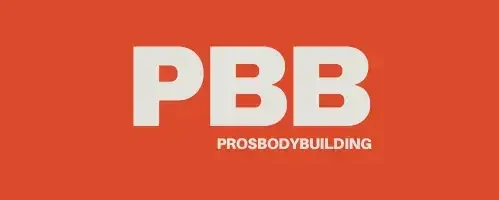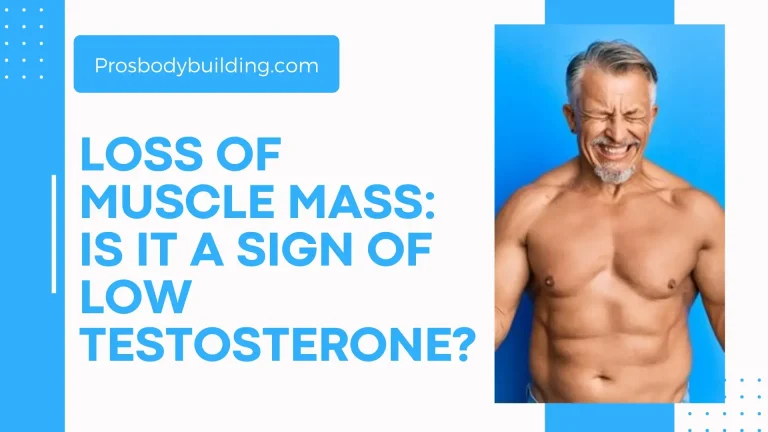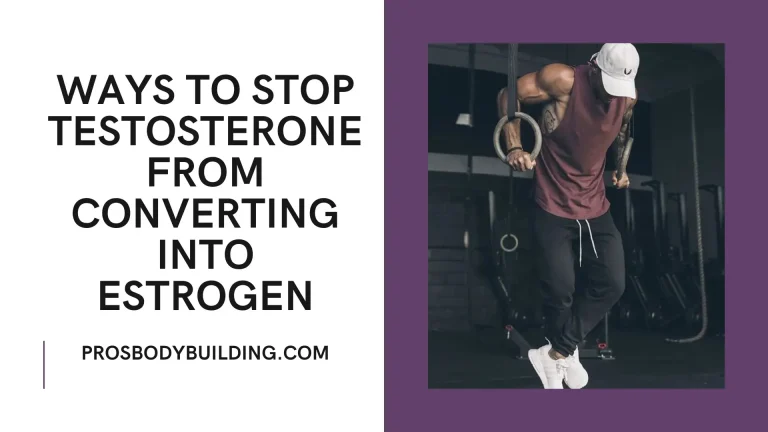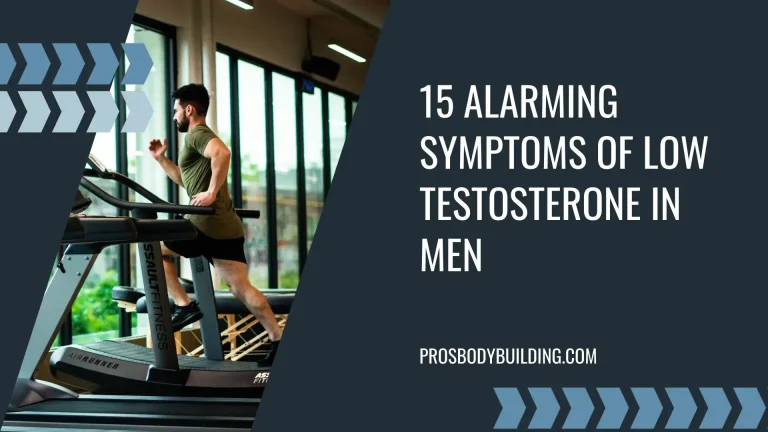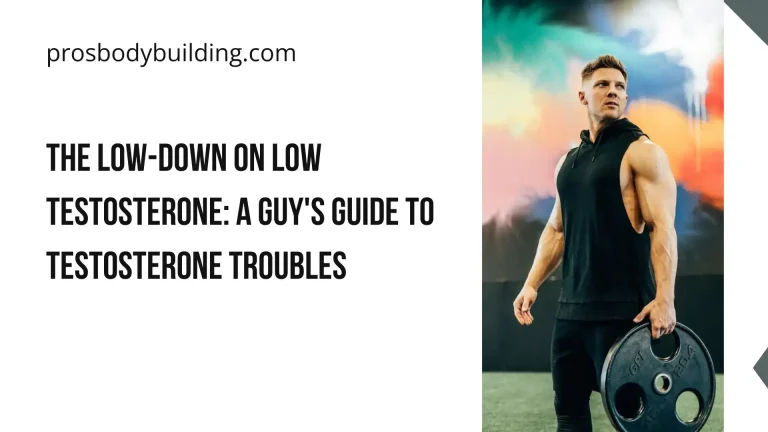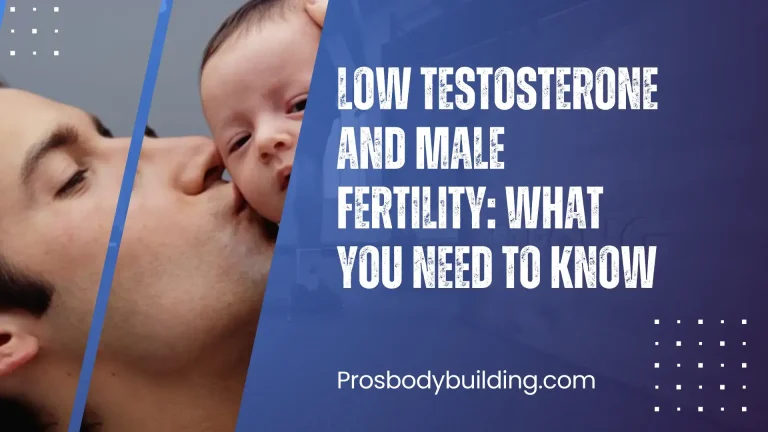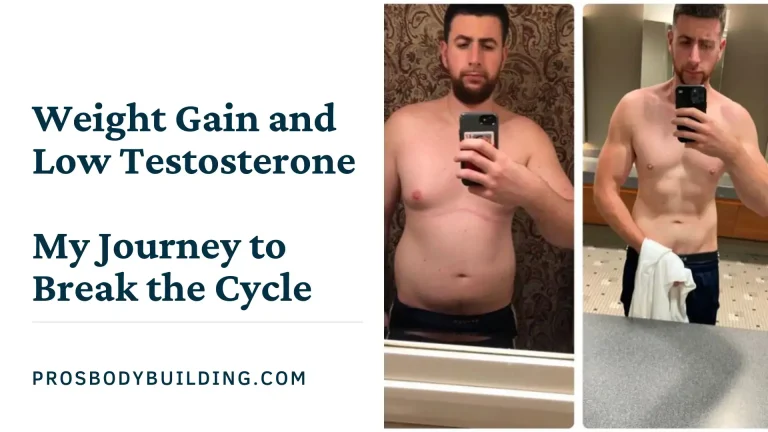Symptoms of Low Testosterone in Men – A Comprehensive Guide
Low testosterone, medically known as hypogonadism, is a condition that affects many men, particularly as they age. Testosterone is a crucial hormone that plays a significant role in a man’s physical and mental health.
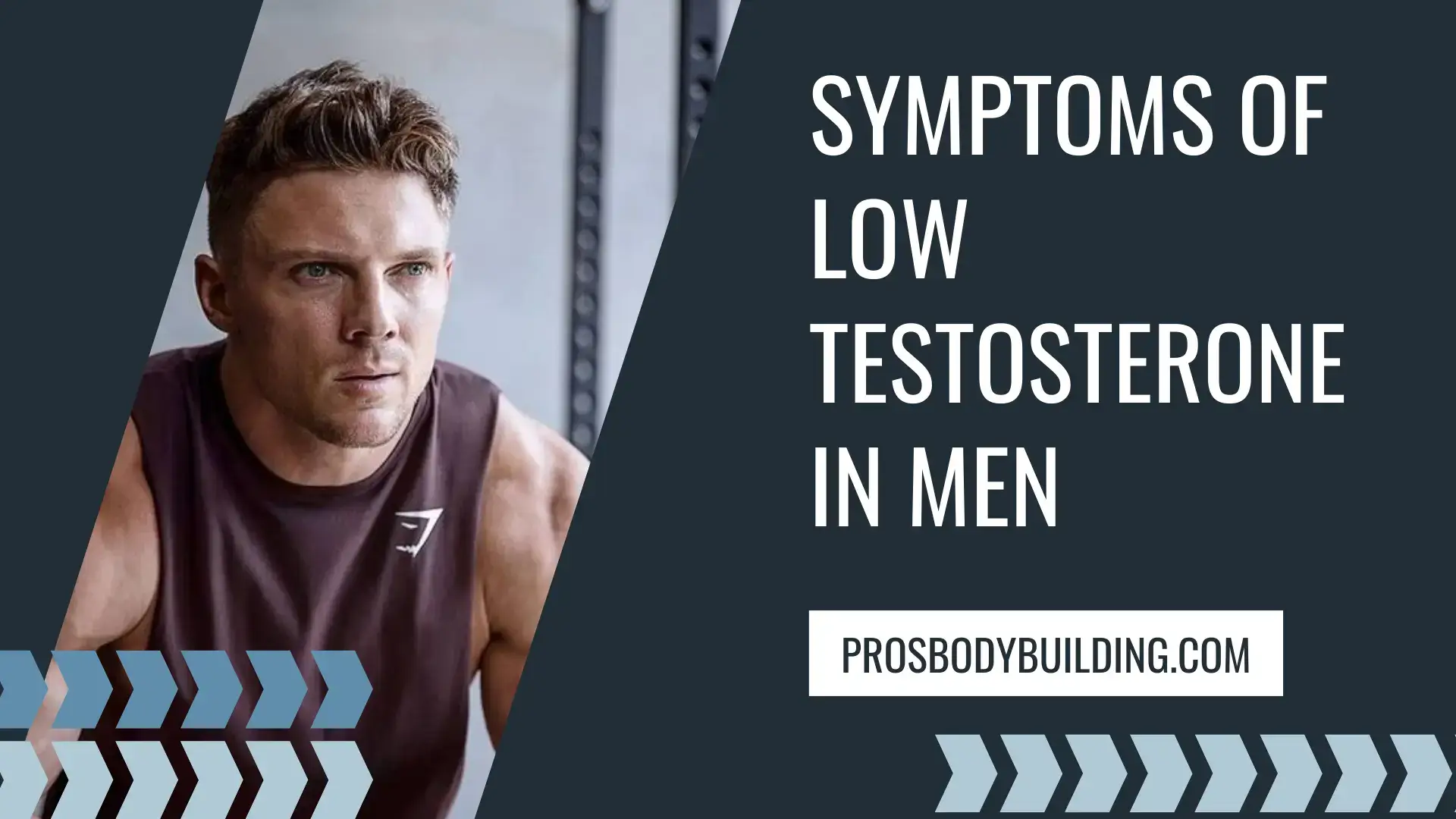
When testosterone levels decline, it can lead to a range of symptoms that can impact the quality of life. In this comprehensive guide, we will explore the symptoms of low testosterone, understand the causes, and suggest effective ways to boost testosterone levels naturally, including the use of Testosil, a highly recommended supplement.
Understanding Testosterone and Its Importance
Testosterone is the primary male sex hormone responsible for the development of male reproductive tissues, the growth of body hair, increased muscle and bone mass, and the maintenance of overall health and well-being. It also plays a vital role in maintaining mood, energy levels, and cognitive function. Produced primarily in the testicles, testosterone levels are regulated by the hypothalamus and pituitary gland in the brain.
Causes of Low Testosterone
Before delving into the symptoms, it’s essential to understand the various factors that can lead to low testosterone levels. These include:
- Aging: Testosterone levels naturally decline with age, starting around the age of 30 and continuing throughout life.
- Chronic Health Conditions: Conditions such as obesity, diabetes, and metabolic syndrome can contribute to lower testosterone levels.
- Medications: Certain medications, including opioids, steroids, and chemotherapy drugs, can reduce testosterone production.
- Lifestyle Factors: Poor diet, lack of exercise, excessive alcohol consumption, and chronic stress can negatively impact testosterone levels.
- Injury or Infection: Injuries to the testicles or infections can directly affect testosterone production.
- Sleep Disorders: Conditions like sleep apnea can disrupt the body’s hormonal balance, leading to lower testosterone levels.
- Genetic Conditions: Disorders like Klinefelter syndrome can affect hormone production and cause low testosterone.
Symptoms of Low Testosterone
Low testosterone can manifest in various ways, impacting both physical and mental health. Here are some of the most common symptoms:
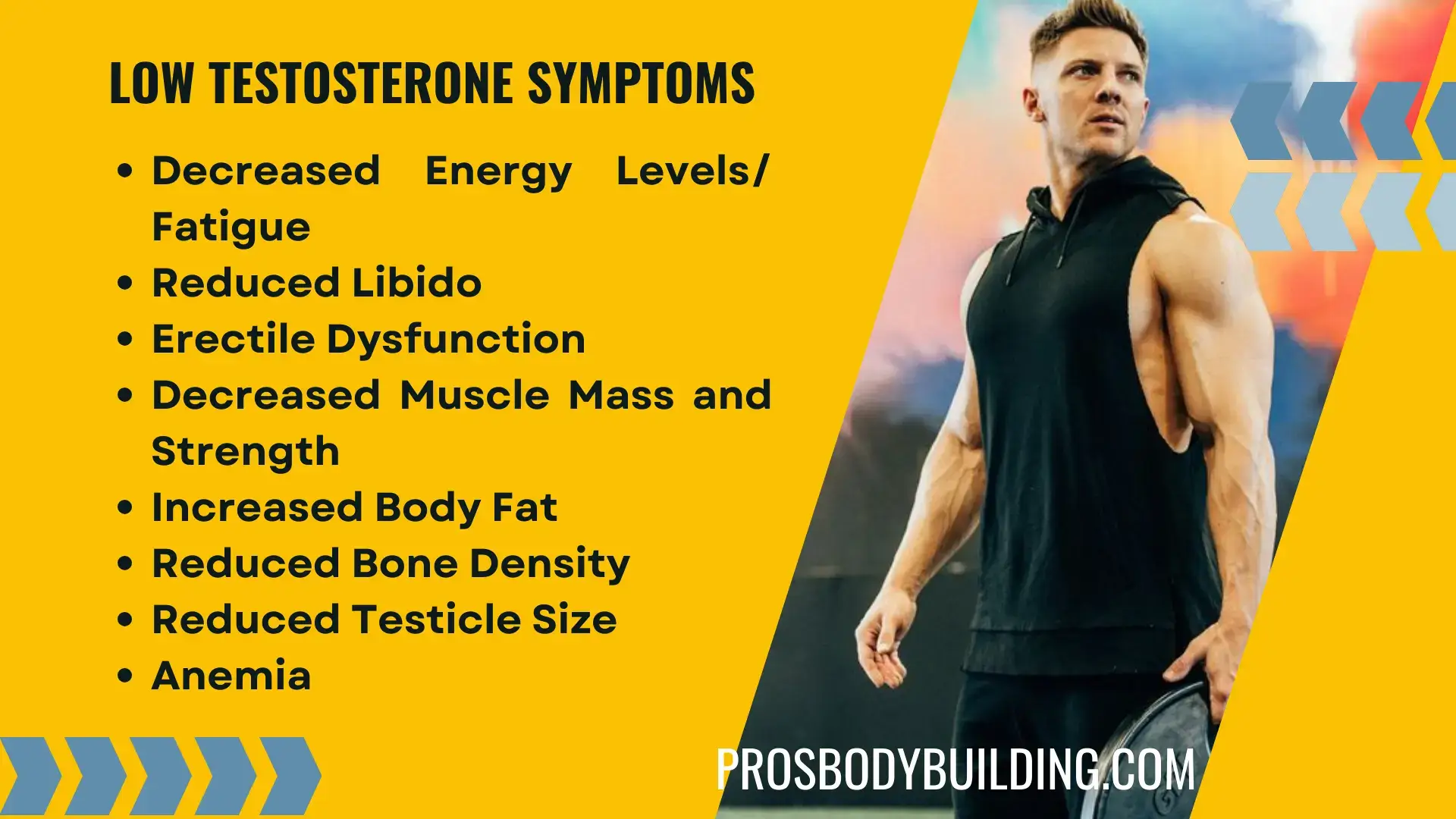
#1. Fatigue and Decreased Energy Levels
One of the most common symptoms of low testosterone is persistent fatigue. Men with low testosterone often feel tired and lack the energy to perform daily tasks, even after adequate rest.
Low testosterone, or hypogonadism, can have a significant impact on a man’s energy levels and overall sense of well-being. Understanding the connection between low testosterone and fatigue can help in identifying the issue and finding effective ways to manage it. Here’s how low testosterone can lead to fatigue and decreased energy levels in men:
1. Role of Testosterone in Energy Metabolism
Testosterone plays a crucial role in the regulation of energy metabolism. It influences the production of red blood cells through the stimulation of erythropoietin in the kidneys. Red blood cells are responsible for carrying oxygen from the lungs to the rest of the body. Adequate oxygen levels are essential for energy production in the cells. When testosterone levels are low, the body’s ability to produce red blood cells can be impaired, leading to lower oxygen transport and, consequently, decreased energy levels and increased fatigue.
2. Impact on Muscle Mass and Strength
Testosterone is vital for the maintenance and development of muscle mass and strength. Muscles are one of the primary sources of energy expenditure in the body. When testosterone levels decline, muscle mass and strength can decrease, which can lead to a reduction in overall physical activity. Lower physical activity levels can contribute to feelings of fatigue and decreased energy. Moreover, weaker muscles can make everyday tasks more tiring, further contributing to fatigue.
3. Influence on Sleep Patterns
Low testosterone can negatively affect sleep patterns. Men with low testosterone often experience sleep disturbances, such as insomnia or poor sleep quality. Adequate and restful sleep is essential for energy restoration and overall health. Poor sleep can lead to chronic fatigue and decreased energy levels during the day. Additionally, conditions like sleep apnea, which are more common in men with low testosterone, can further disrupt sleep and contribute to fatigue.
4. Effect on Mood and Mental Health
Testosterone influences neurotransmitter activity in the brain, including the production of serotonin and dopamine, which are chemicals that regulate mood and energy levels. Low testosterone can lead to mood changes, such as depression, irritability, and anxiety. These mood changes can drain mental energy and contribute to a feeling of constant fatigue. Depression, in particular, is closely linked to low energy levels and can exacerbate the physical symptoms of low testosterone.
5. Hormonal Balance and Stress Response
Testosterone is involved in the regulation of the body’s stress response. It helps balance the levels of cortisol, a hormone released in response to stress. Chronic stress and elevated cortisol levels can lead to fatigue and decreased energy. Low testosterone disrupts this balance, leading to higher cortisol levels and a prolonged stress response, which can drain energy and lead to feelings of exhaustion.
6. Metabolic Rate and Fatigue
Testosterone plays a role in regulating the metabolic rate. It helps in the conversion of fat to energy and supports the body’s overall metabolic functions. Low testosterone levels can slow down metabolism, leading to weight gain and an increased feeling of lethargy. A slower metabolism means the body is less efficient at converting food into usable energy, which can contribute to persistent fatigue.
The relationship between low testosterone and fatigue is complex and multifaceted. Testosterone affects various physiological processes that are crucial for maintaining energy levels and overall vitality. When testosterone levels drop, it can lead to a cascade of effects that ultimately result in fatigue and decreased energy.
#2. Reduced Sex Drive
Testosterone is a critical hormone in men that influences various aspects of health, including sexual function. One of the most significant effects of low testosterone is a decrease in libido or sexual desire. Here’s a detailed explanation of how low testosterone can lead to poor libido in men:
1. Role of Testosterone in Sexual Desire
Testosterone is the primary male sex hormone, and it plays a central role in regulating sexual desire. It affects the brain’s areas responsible for controlling libido, particularly the hypothalamus, which helps manage sexual arousal. When testosterone levels are adequate, they promote sexual interest and drive. Low testosterone disrupts these processes, leading to reduced sexual desire.
2. Impact on Erectile Function
While testosterone is not solely responsible for achieving erections, it plays a supportive role in erectile function. Low testosterone levels can lead to a decrease in the frequency and quality of erections, including spontaneous erections during sleep. Poor erectile function can diminish sexual desire and confidence, further reducing libido.
3. Influence on Mood and Mental Health
Testosterone affects neurotransmitters in the brain, such as serotonin and dopamine, which regulate mood and feelings of pleasure. Low testosterone can lead to mood swings, depression, and anxiety. These mood changes can negatively impact sexual desire. When a man is feeling depressed or anxious, his interest in sexual activity is likely to decrease.
4. Energy Levels and Physical Health
Testosterone contributes to overall energy levels and physical vitality. Low testosterone often results in fatigue and decreased energy, which can make sexual activity seem exhausting or unappealing. Physical exhaustion and lack of energy can significantly dampen libido.
5. Relationship Between Testosterone and Cortisol
Testosterone and cortisol (the stress hormone) have a reciprocal relationship. High cortisol levels, often due to chronic stress, can suppress testosterone production. Low testosterone, in turn, can make it harder to cope with stress, creating a vicious cycle. Chronic stress and high cortisol levels are known to reduce sexual desire.
6. Body Composition and Self-Esteem
Testosterone helps maintain muscle mass and reduce body fat. Low testosterone can lead to an increase in body fat and a decrease in muscle mass, potentially leading to body image issues and lower self-esteem. When a man feels less confident about his body, his interest in sexual activity may decline.
7. Reduction in Nitric Oxide Production
Testosterone influences the production of nitric oxide, a molecule that helps relax blood vessels and improve blood flow to the penis. Low levels of testosterone can reduce nitric oxide production, leading to decreased blood flow and erectile difficulties. Poor blood flow and erectile issues can lead to a reduction in sexual desire.
8. Hormonal Imbalances
Testosterone works in concert with other hormones, such as estrogen. An imbalance in these hormones can disrupt sexual function. For example, low testosterone levels can result in relatively higher levels of estrogen, which can negatively affect libido.
#3. Decreased Muscle Mass and Strength
Testosterone is a key hormone in men that plays a significant role in maintaining muscle mass and strength. When testosterone levels drop, it can lead to noticeable changes in muscle composition and overall physical strength. Here’s how low testosterone contributes to decreased muscle mass and strength:
1. Role of Testosterone in Muscle Growth
Testosterone is crucial for muscle protein synthesis, the process by which muscles repair and grow after exercise. It stimulates the production of protein in muscle cells, leading to increased muscle mass and strength. When testosterone levels are sufficient, they promote muscle fiber growth and repair, essential for maintaining muscle mass.
2. Impact on Muscle Protein Synthesis
Low testosterone levels reduce the rate of muscle protein synthesis. Without adequate testosterone, the body cannot effectively repair and build muscle tissue, leading to a decrease in muscle mass over time. This diminished ability to synthesize protein in muscles results in slower recovery after workouts and a reduced capacity for muscle growth.
3. Influence on Fat Distribution
Testosterone helps regulate body composition, including the distribution of fat and muscle. Low testosterone can lead to an increase in body fat, especially around the abdomen, and a corresponding decrease in lean muscle mass. This shift in body composition can make muscles appear smaller and weaker, even if overall body weight remains the same or increases.
4. Reduction in Muscle Fiber Size and Number
Testosterone promotes the growth of both the size and number of muscle fibers. Low testosterone levels can lead to a reduction in the size of existing muscle fibers and prevent the formation of new muscle fibers. This results in a decrease in overall muscle mass and strength.
5. Impact on Strength and Performance
Muscle strength is directly related to muscle mass and the efficiency of muscle fibers. With low testosterone, the muscles become weaker due to the reduced size and number of muscle fibers, and decreased protein synthesis. This leads to a noticeable decline in physical performance, making it harder to lift weights, perform daily tasks, or engage in physical activities.
6. Hormonal Balance and Catabolic State
Testosterone has an anti-catabolic effect, meaning it helps prevent the breakdown of muscle tissue. Low testosterone can lead to a catabolic state where the body breaks down muscle tissue for energy, especially during periods of physical stress or inadequate nutrition. This muscle breakdown further contributes to the loss of muscle mass and strength.
7. Energy Levels and Exercise Tolerance
Low testosterone is often associated with fatigue and decreased energy levels. This lack of energy can make it challenging to engage in regular exercise or maintain an active lifestyle. Without sufficient physical activity, muscles are not stimulated to grow or maintain their strength, leading to atrophy and weakness over time.
8. Reduced Motivation and Mental Focus
Testosterone also affects mental aspects related to exercise, such as motivation and focus. Low levels of testosterone can lead to decreased motivation to work out and a lack of mental clarity during physical activities. This reduction in exercise frequency and intensity contributes to the loss of muscle mass and strength.
#4. Increased Body Fat
Low testosterone, or hypogonadism, can significantly affect body composition in men, leading to an increase in body fat. Testosterone plays a crucial role in regulating fat distribution, muscle mass, and overall metabolism. Here’s how low testosterone levels contribute to increased body fat in men:
1. Reduced Muscle Mass
Testosterone is essential for the maintenance and growth of muscle mass. Muscle tissue burns more calories than fat tissue, even at rest. When testosterone levels are low, muscle mass decreases due to reduced protein synthesis and muscle fiber growth. This decrease in muscle mass lowers the basal metabolic rate (BMR), meaning the body burns fewer calories at rest. The reduction in muscle mass and metabolic rate leads to an increase in body fat as the body stores more unused calories as fat.
2. Altered Fat Distribution
Testosterone helps regulate where fat is stored in the body. Men with healthy testosterone levels typically store fat in areas like the abdomen and chest. However, when testosterone levels are low, fat distribution changes, leading to increased fat storage in the abdomen, hips, and thighs. This altered fat distribution results in a more pronounced accumulation of visceral fat (fat around internal organs), which is associated with various health risks, including cardiovascular disease and diabetes.
3. Increased Insulin Resistance
Low testosterone is associated with increased insulin resistance, a condition where the body’s cells do not respond effectively to insulin. Insulin resistance leads to higher levels of insulin in the blood, which can promote fat storage, particularly in the abdominal region. Increased fat storage further exacerbates insulin resistance, creating a vicious cycle that leads to more fat accumulation.
4. Hormonal Imbalances
Testosterone and estrogen levels are balanced in the male body to regulate various physiological processes. When testosterone levels drop, the relative levels of estrogen may increase. Elevated estrogen levels can promote fat storage and reduce muscle mass, contributing to overall weight gain. Additionally, fat tissue contains an enzyme called aromatase, which converts testosterone into estrogen. Increased body fat can thus lead to higher estrogen levels, further reducing testosterone and promoting more fat accumulation.
5. Reduced Physical Activity
Men with low testosterone often experience fatigue, decreased energy levels, and reduced motivation to engage in physical activities. Reduced physical activity leads to fewer calories being burned and contributes to muscle loss, both of which can result in increased body fat. A sedentary lifestyle exacerbates the problem by promoting weight gain and fat accumulation.
6. Slower Metabolism
Testosterone influences metabolic rate by regulating energy expenditure and fat oxidation. Low testosterone levels can lead to a slower metabolism, meaning the body burns fewer calories for energy. A slower metabolism increases the likelihood of excess calories being stored as fat, contributing to weight gain and increased body fat.
7. Psychological Factors
Low testosterone can affect mood and mental health, leading to symptoms such as depression and anxiety. These psychological factors can reduce motivation to maintain a healthy lifestyle, including regular exercise and a balanced diet. Poor mental health and lack of motivation can result in unhealthy eating habits and weight gain.
#5. Decreased Bone Density
Testosterone is a critical hormone for maintaining various aspects of men’s health, including bone density. Reduced testosterone levels, or hypogonadism, can lead to decreased bone density, increasing the risk of osteoporosis and fractures. Here’s how low testosterone contributes to reduced bone density in men:
1. Role of Testosterone in Bone Health
Testosterone plays a vital role in bone health by promoting bone formation and inhibiting bone resorption. It helps stimulate the activity of osteoblasts, the cells responsible for bone formation. Additionally, testosterone helps maintain the balance between bone resorption (breakdown) and bone formation, ensuring bones remain strong and dense.
2. Conversion to Estrogen
Testosterone is converted to estrogen in men through an enzyme called aromatase. Estrogen is essential for maintaining bone density because it slows down the activity of osteoclasts, the cells responsible for bone resorption. Low testosterone levels lead to lower estrogen levels, reducing this protective effect on bones and leading to increased bone resorption and decreased bone density.
3. Impact on Bone Remodeling
Bone remodeling is a continuous process where old bone tissue is replaced by new bone tissue. Testosterone helps regulate this process by supporting the activity of osteoblasts. When testosterone levels are low, the balance of bone remodeling shifts, resulting in more bone resorption than formation. This imbalance causes a net loss of bone mass over time.
4. Reduction in Bone Mineral Density (BMD)
Bone mineral density (BMD) is a measure of the amount of minerals (primarily calcium) in a specific volume of bone. High BMD is indicative of strong and healthy bones. Low testosterone levels are associated with a decrease in BMD, making bones more fragile and susceptible to fractures. This reduction in BMD is a direct consequence of the diminished bone formation and increased bone resorption caused by low testosterone.
5. Muscle Mass and Bone Strength
Testosterone also contributes to muscle mass and strength. Strong muscles are essential for supporting and protecting bones. When testosterone levels are low, muscle mass and strength decrease, leading to less mechanical load and stimulation on bones. This reduced mechanical load can lead to decreased bone density, as bones require regular stress from muscles to maintain their strength.
6. Calcium Absorption
Testosterone influences the absorption of calcium, a crucial mineral for bone health. Low testosterone levels can impair the body’s ability to absorb calcium efficiently, leading to weaker bones and decreased bone density. Adequate calcium absorption is essential for maintaining bone structure and preventing osteoporosis.
7. Increased Risk of Osteoporosis
Osteoporosis is a condition characterized by weak and brittle bones due to decreased bone density. Men with low testosterone levels are at a higher risk of developing osteoporosis. This increased risk is due to the combined effects of reduced bone formation, increased bone resorption, and lower muscle mass, all of which contribute to weakened bones.
#5. Reduced Testicular Size of Testicular Atrophy
Testosterone is the primary male sex hormone produced predominantly in the testicles. It plays a crucial role in the development and maintenance of male reproductive tissues, including the testicles. Low testosterone levels, or hypogonadism, can lead to a variety of symptoms, including reduced testicle size. Here’s how low testosterone can contribute to this condition:
1. Role of Testosterone in Testicular Development and Maintenance
Testosterone is essential for the proper development and function of the testicles. It stimulates the growth and maintenance of the seminiferous tubules, which are responsible for sperm production. Adequate testosterone levels ensure that these structures remain healthy and functional. When testosterone levels drop, the seminiferous tubules can shrink, leading to a decrease in testicle size.
2. Impact on Spermatogenesis
Spermatogenesis is the process of sperm production, which occurs within the seminiferous tubules of the testicles. Testosterone is a key regulator of this process. Low testosterone levels can impair spermatogenesis, leading to reduced sperm production. This reduction can cause the seminiferous tubules to shrink, resulting in smaller testicles.
3. Hormonal Imbalances and Feedback Mechanisms
The hypothalamic-pituitary-gonadal (HPG) axis is a hormonal system that regulates testosterone production. The hypothalamus releases gonadotropin-releasing hormone (GnRH), which signals the pituitary gland to release luteinizing hormone (LH). LH then stimulates the testicles to produce testosterone. When testosterone levels are low, the feedback mechanism is disrupted, leading to reduced stimulation of the testicles by LH. This lack of stimulation can cause the testicles to shrink.
4. Atrophy of Leydig Cells
Leydig cells, located in the testicles, are responsible for producing testosterone. Chronic low testosterone levels can lead to the atrophy (shrinkage) of Leydig cells, further reducing the production of testosterone. This atrophy can contribute to the overall decrease in testicle size.
5. Effect of Aging
Aging naturally leads to a gradual decline in testosterone levels, which can affect testicle size. As men age, the reduction in testosterone production can lead to a decrease in testicle size due to the diminished function of the seminiferous tubules and Leydig cells.
6. Impact of Underlying Health Conditions
Certain health conditions that cause low testosterone, such as testicular disorders, pituitary gland dysfunction, or genetic conditions like Klinefelter syndrome, can directly affect the size of the testicles. These conditions can disrupt the normal production and regulation of testosterone, leading to testicular shrinkage.
7. Reduced Blood Flow to Testicles
Low testosterone can lead to reduced blood flow to the testicles, which is essential for delivering nutrients and oxygen necessary for testicular health. Decreased blood flow can cause the testicles to atrophy over time.
8. Impact of Lifestyle Factors
Certain lifestyle factors, such as poor diet, lack of exercise, excessive alcohol consumption, and substance abuse, can contribute to low testosterone levels and, consequently, reduced testicle size. These factors can negatively impact overall health and hormone production.
#6. Hot Flashes
Hot flashes are a common symptom often associated with menopause in women, but they can also occur in men, particularly those with low testosterone levels. Understanding how low testosterone leads to hot flashes involves exploring the hormonal changes and physiological responses involved.
What Are Hot Flashes?
Hot flashes are sudden feelings of intense heat that are not caused by external sources. They can cause discomfort and are often accompanied by:
- Sweating: Particularly on the face, neck, and chest.
- Flushed Skin: Redness, especially on the upper body.
- Rapid Heartbeat: A feeling of your heart pounding.
- Chills: Following the hot flash, you might feel cold or shiver.
Hot flashes can last from a few seconds to several minutes and may occur frequently, disrupting daily activities and sleep.
Causes of Hot Flashes in Men with Low Testosterone
1. Hormonal Imbalance
Testosterone and estrogen levels are balanced in the male body. Low testosterone can lead to a relative increase in estrogen levels. Estrogen plays a role in regulating body temperature through the hypothalamus, the part of the brain that acts as the body’s thermostat. An imbalance in these hormones can disrupt the hypothalamus’s ability to regulate temperature, leading to hot flashes.
2. Effect on the Hypothalamus
The hypothalamus responds to changes in hormone levels, including testosterone. When testosterone levels drop, the hypothalamus may become more sensitive to slight changes in body temperature. This heightened sensitivity can cause the hypothalamus to trigger hot flashes as a way to cool the body down, even if there is no actual need to do so.
3. Impact of Testosterone Replacement Therapy (TRT)
Men undergoing testosterone replacement therapy may experience fluctuations in hormone levels, especially if therapy is not properly balanced. These fluctuations can cause the hypothalamus to misinterpret body temperature, leading to hot flashes. This is more common when therapy begins or doses are adjusted.
4. Stress and Anxiety
Low testosterone is associated with increased levels of stress and anxiety, which can exacerbate hot flashes. Stress affects the body’s autonomic nervous system, which can trigger hot flashes as part of the body’s fight-or-flight response.
5. Medical Conditions and Treatments
Certain medical conditions and treatments that cause low testosterone, such as prostate cancer treatments (androgen deprivation therapy), can lead to hot flashes. These treatments often aim to reduce testosterone levels, leading to the hormonal imbalances that trigger hot flashes.
#7. Low Blood Count (Anemia)
Anemia is a condition characterized by a lack of healthy red blood cells or hemoglobin, which can result in fatigue, weakness, and other health issues. While anemia is commonly associated with nutritional deficiencies or chronic diseases, low testosterone levels in men can also contribute to this condition. Here’s how low testosterone can lead to anemia:
1. Role of Testosterone in Red Blood Cell Production
Testosterone plays a significant role in the production of red blood cells. It stimulates the bone marrow to produce erythropoietin, a hormone that promotes the formation of red blood cells. Adequate levels of testosterone ensure that the bone marrow produces a sufficient number of red blood cells to maintain healthy blood oxygen levels.
2. Impact on Erythropoiesis
Erythropoiesis is the process of red blood cell production. Testosterone enhances erythropoiesis by increasing the sensitivity of bone marrow cells to erythropoietin. When testosterone levels are low, this process is impaired, leading to reduced production of red blood cells and, consequently, anemia.
3. Reduced Bone Marrow Activity
Testosterone deficiency can directly affect the bone marrow’s ability to produce red blood cells. The bone marrow requires adequate hormonal support to function optimally. Low testosterone levels can lead to decreased bone marrow activity, resulting in fewer red blood cells being produced.
4. Increased Red Blood Cell Destruction
Low testosterone levels can also increase the rate at which red blood cells are destroyed. Testosterone helps maintain the stability and integrity of red blood cells. Without sufficient testosterone, red blood cells may become more fragile and prone to destruction, further contributing to anemia.
5. Effect on Hemoglobin Levels
Hemoglobin is the protein in red blood cells that carries oxygen throughout the body. Testosterone supports the production of hemoglobin. Low testosterone levels can lead to a decrease in hemoglobin concentration, resulting in lower oxygen-carrying capacity of the blood and symptoms of anemia.
6. Influence on Iron Metabolism
Testosterone influences iron metabolism by promoting the absorption and utilization of iron, a critical component of hemoglobin. Low testosterone can disrupt iron metabolism, leading to inadequate iron levels and reduced hemoglobin production, contributing to anemia.
7. Interaction with Other Hormones
Testosterone interacts with other hormones, such as thyroid hormones, that are involved in red blood cell production. A deficiency in testosterone can disrupt the balance of these hormones, leading to impaired erythropoiesis and anemia.
8. Associated Health Conditions
Low testosterone levels are often associated with chronic health conditions such as chronic kidney disease, which can impair erythropoiesis and lead to anemia. These conditions can exacerbate the effects of low testosterone on red blood cell production.
Diagnosing Low Testosterone
If you experience several of these symptoms, it’s essential to consult with a healthcare provider. They can perform tests to determine your testosterone levels and recommend appropriate treatments. The diagnostic process typically includes:
- Medical History and Physical Examination: Your doctor will take a detailed medical history and perform a physical examination to assess your symptoms and overall health.
- Blood Tests: A blood test is the most common method for measuring testosterone levels. The test is usually performed in the morning when testosterone levels are at their highest.
- Additional Tests: Depending on your symptoms and medical history, your doctor may recommend additional tests to rule out other conditions that could be causing your symptoms.
Natural Ways to Boost Testosterone
There are several natural ways to boost testosterone levels. These include lifestyle changes, dietary adjustments, and the use of natural supplements like Testosil. Here are some effective strategies:
- Exercise Regularly: Physical activity, particularly strength training and high-intensity interval training (HIIT), has been shown to boost testosterone levels. Aim for at least 30 minutes of exercise most days of the week.
- Maintain a Healthy Diet: A balanced diet rich in protein, healthy fats, and carbohydrates can support hormone production. Foods like lean meats, fish, eggs, nuts, and vegetables are excellent choices.
- Get Adequate Sleep: Quality sleep is crucial for maintaining healthy testosterone levels. Aim for 7-9 hours of sleep per night and establish a regular sleep routine.
- Reduce Stress: Chronic stress can lead to elevated levels of cortisol, which can negatively impact testosterone. Practice stress-reducing techniques like meditation, yoga, and deep breathing exercises.
- Maintain a Healthy Weight: Obesity is linked to lower testosterone levels. Losing excess weight through diet and exercise can help boost testosterone.
- Limit Alcohol Consumption: Excessive alcohol consumption can lower testosterone levels. Moderation is key; try to limit alcohol intake to a few drinks per week.
- Avoid Toxins: Exposure to environmental toxins and endocrine disruptors can affect hormone levels. Avoid products containing BPA, parabens, and other harmful chemicals.
Introducing Testosil: A Natural Supplement to Boost Testosterone
For those looking to enhance their testosterone levels naturally, Testosil is a highly recommended supplement. Testosil is designed to support and enhance your body’s testosterone production using a blend of scientifically backed ingredients. Here’s why Testosil stands out:
- Fenugreek Extract: Known to enhance libido and increase testosterone levels. Fenugreek also has a positive effect on strength and overall vitality.
- Zinc: Essential for testosterone production and overall hormonal health. Zinc deficiency is common and can directly affect testosterone levels.
- D-Aspartic Acid: An amino acid that can help boost testosterone levels. It plays a role in the release of hormones that aid in testosterone production.
- Vitamin D3: Plays a crucial role in testosterone production. Many people have low levels of vitamin D, which is linked to low testosterone.
- Ashwagandha: An adaptogen that helps reduce stress and improve overall hormone balance. Chronic stress is a known factor in low testosterone levels.
Why Choose Testosil?
Testosil is a great option for those who prefer a holistic approach to managing their health. It’s formulated to help your body produce more testosterone naturally, avoiding the need for synthetic hormones. Here are some reasons why Testosil is highly recommended:
- Natural Ingredients: Testosil uses natural ingredients that are safe and effective.
- Scientifically Backed: The ingredients in Testosil are supported by scientific research to help boost testosterone levels.
- Holistic Approach: Testosil supports overall health and well-being, not just testosterone levels.
- Convenience: It’s easy to incorporate into your daily routine.
By incorporating Testosil into your routine, you can support your body’s natural functions and potentially alleviate the symptoms of low testosterone.
Check out my detailed and unbiased Testosil review by clicking here.
Conclusion
Low testosterone can significantly impact a man’s quality of life, affecting physical health, mental well-being, and overall vitality. Recognizing the symptoms and understanding the causes of low testosterone is the first step towards effective management. While medical treatments are available, many men prefer natural approaches to boost their testosterone levels.
Testosil is a natural supplement that stands out as a safe and effective way to support testosterone production. Combined with lifestyle changes such as regular exercise, a healthy diet, adequate sleep, and stress reduction, Testosil can help men improve their testosterone levels and enhance their overall health and well-being.
Always consult with a healthcare provider before starting any new supplement regimen to ensure it’s right for you. With the right approach, you can take control of your health and enjoy a higher quality of life. Feel free to share your experiences or ask any questions! Let’s support each other on this journey to better health.
